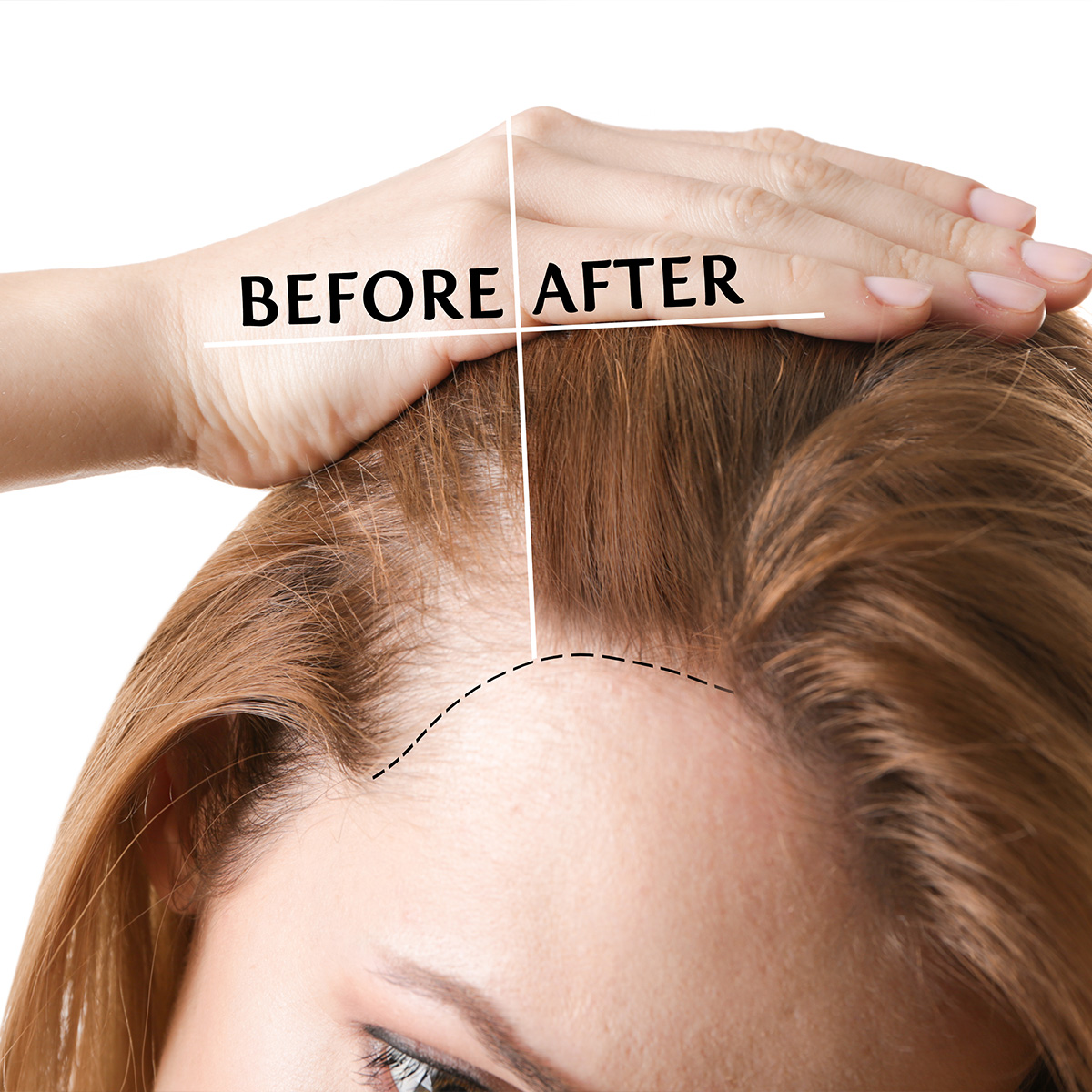
Hair Loss Causes in Women
Hair loss in women can result from a variety of factors. One common cause is female pattern baldness, which, much like its male counterpart, is primarily influenced by genetics and hormonal imbalances, particularly the role of androgens. Hormonal changes related to pregnancy, menopause, or conditions like PCOS can also lead to hair loss. Additionally, fluctuations in thyroid function, certain medications, and nutritional deficiencies can contribute to hair shedding in women. Stress and emotional factors can trigger a temporary condition known as telogen effluvium, leading to increased hair shedding.
What causes hair loss, and what can you do about it?
Hair loss in women is just that — when a woman experiences unexpected, heavy loss of hair. Generally, humans shed between 50 and 100 single hairs per day. Hair shedding is part of a natural balance — some hairs fall out while others grow in. When the balance is interrupted — when hair falls out and less hair grows in — hair loss happens. Hair loss is different than hair shedding. The medical term for hair loss is “alopecia.”
Hair grows on almost all of your skin surfaces — not the palms of your hands, soles of your feet, lips or eyelids. Light, fine, short hair is called vellus hair. Terminal/androgenic hair is thicker, darker and longer.

Hair Loss: The Ludwig Scale

CLASS 1
The earliest stage of female hair loss. Hair loss has begun on the front and top of the scalp. Many women don’t notice their hair loss at this point, but parting your hair down the center typically makes the hair loss more visible.

CLASS 2
At this point, the hair loss is more significant. The scalp clearly shows through thinning areas. You might notice thinning, shedding, and decreased hair volume.

CLASS 3
The final stage of hair loss. You may have completely lost the hair on the crown of your head. Typically, physicians cannot harvest enough grafts to fully treat the affected area. However, many women will still see a significant improvement to their appearance following proper treatment.
